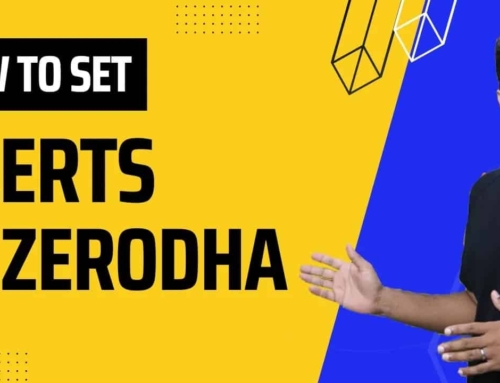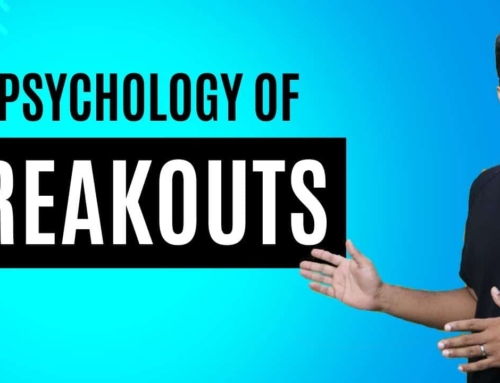What Happens if Your Broker Goes Bankrupt?
Joe Campbell was a 32 year old, small business owner who used to live in a nice little town in Arizona. He was also a stock market enthusiast and was just a casual trader.He used to take in a few trades once in a while. One day Joe heard the news about a pharmaceutical company called Kalo bios. Kalo bios was a failing company and that day they finally announced that they were shutting down their operations and selling all their assets.
The company was basically dead and Joe Campbell, like many other traders, saw a trading opportunity in shorting the shares of this company. Shorting in case you don’t know is a trading technique when traders sell the shares of a big company with the expectation that the stock will come down later. The basic idea is to sell high first and buy low later. At that time, the stock was trading somewhere around $2, which meant that if he shorted the stock, the price would eventually come down and he would make a decent profit of $2 per share.
Campbell sold about $33,000 worth of stock at an average price of about $2 a share. Now everything was going fine and in fact, at the end of the trading session, he was sitting on a good profit. However, he thought that he was making enough money and wanted to carry it forward to the next day to maximize his profit. He thought that the company was going down to Zero anyway and if he held it, he would make a clean $60,000, but that turned out to be a bad idea.
However, what happened was that afternoon, Kalo Bios issued a surprising press release, announcing that an influential investor named Martin Shkreli had acquired more than 50% of the outstanding shares of Kalo Bios.
On top of that, Martin Skelly went on Twitter and said that he would not sell any more stocks to those looking to short sell. Hence these two news flows, the acquisition of the company by this investor and his refusal to sell shares became a deadly cocktail for all the short sellers, because the stock of Kalos Bios Pharmaceuticals went through a massive short squeeze, which took the stock of the company up by 800% in that extended hours of trading.
Now, all this happened within one hour and Campbell had no idea what was going on. In fact, he was in a business meeting at the time and when he got out, he received a message from a friend who knew that Campbell was short on this stock. So he asked him to check out the stock because something was going on here.
After hearing the news, Campbell started freaking out. So he immediately called his broker to check what was going on and the first thing that the customer care representative told Campbell was that they had already closed his trade. When Campbell heard that, he was relieved because he thought he was not in the trade anymore.
He felt it was a good thing and wanted to know how much he lost. So the representative checked and said that he sold the shares of the company at $2. The trade was closed at an average price of about $18.50 and so he had incurred a loss of 825%, but Campbell was still not able to understand. He did not understand all the jargon and knew that he had $37,000 in his account.
This is when he got the shock of his life, because the agent explained that for buying back those shares at $18, they needed a total of about $150,000 and since Campbell’s account only had $37,000, the broker had to put in their own money to close the trade.
Hence, Campbell now owed the broker $106,000, including penalty and charges and it came to an equivalent of 1 crore rupees. This news crushed Campbell, because he had never imagined that a casual trade like that would ruin his whole life because Campbell was just a middle-class person.
He was left with no choice, but to sell all his positions. He had to liquidate all the money from his and his wife’s retirement account. In spite of doing all this, he was still not able to pay off the broker and as a last attempt to avoid bankruptcy, he created a GoFundMe campaign for crowdsourcing.
That too did not work out because he barely got $5,000 from it. Now little is known what happened next, but most likely he lost everything in just one trade. So what did we learn from this story? Firstly, the question that we need to ask is that can this happen in India? The answer is absolutely yes.
Hundreds of Indian traders fall for this mistake every day, because they are not aware of how shorting works. So this is what we need to know from this story. First, do not attempt shorting without understanding completely how it works and the risk involved. Number 2 is you should never carry an un-hedged short position like Joe Campbell did. Number 3, which I think, is the most important lesson that we can learn from the story of Joe Campbell and that is, when you short something, you can lose more than your original capital.
This was the moral of the story. I know this is a sad story, but this is also a cautionary tale of how dangerous the stock market can be, especially for those who don’t understand how it works. Hence I hope that you’ll learn something from this and you will remember that in your own stock market journey.
Joe Campbell was a 32 year old, small business owner who used to live in a nice little town in Arizona. He was also a stock market enthusiast and was just a casual trader.He used to take in a few trades once in a while. One day Joe heard the news about a pharmaceutical company called Kalo bios. Kalo bios was a failing company and that day they finally announced that they were shutting down their operations and selling all their assets.
The company was basically dead and Joe Campbell, like many other traders, saw a trading opportunity in shorting the shares of this company. Shorting in case you don’t know is a trading technique when traders sell the shares of a big company with the expectation that the stock will come down later. The basic idea is to sell high first and buy low later. At that time, the stock was trading somewhere around $2, which meant that if he shorted the stock, the price would eventually come down and he would make a decent profit of $2 per share.
Campbell sold about $33,000 worth of stock at an average price of about $2 a share. Now everything was going fine and in fact, at the end of the trading session, he was sitting on a good profit. However, he thought that he was making enough money and wanted to carry it forward to the next day to maximize his profit. He thought that the company was going down to Zero anyway and if he held it, he would make a clean $60,000, but that turned out to be a bad idea.
However, what happened was that afternoon, Kalo Bios issued a surprising press release, announcing that an influential investor named Martin Shkreli had acquired more than 50% of the outstanding shares of Kalo Bios.
On top of that, Martin Skelly went on Twitter and said that he would not sell any more stocks to those looking to short sell. Hence these two news flows, the acquisition of the company by this investor and his refusal to sell shares became a deadly cocktail for all the short sellers, because the stock of Kalos Bios Pharmaceuticals went through a massive short squeeze, which took the stock of the company up by 800% in that extended hours of trading.
Now, all this happened within one hour and Campbell had no idea what was going on. In fact, he was in a business meeting at the time and when he got out, he received a message from a friend who knew that Campbell was short on this stock. So he asked him to check out the stock because something was going on here.
After hearing the news, Campbell started freaking out. So he immediately called his broker to check what was going on and the first thing that the customer care representative told Campbell was that they had already closed his trade. When Campbell heard that, he was relieved because he thought he was not in the trade anymore.
He felt it was a good thing and wanted to know how much he lost. So the representative checked and said that he sold the shares of the company at $2. The trade was closed at an average price of about $18.50 and so he had incurred a loss of 825%, but Campbell was still not able to understand. He did not understand all the jargon and knew that he had $37,000 in his account.
This is when he got the shock of his life, because the agent explained that for buying back those shares at $18, they needed a total of about $150,000 and since Campbell’s account only had $37,000, the broker had to put in their own money to close the trade.
Hence, Campbell now owed the broker $106,000, including penalty and charges and it came to an equivalent of 1 crore rupees. This news crushed Campbell, because he had never imagined that a casual trade like that would ruin his whole life because Campbell was just a middle-class person.
He was left with no choice, but to sell all his positions. He had to liquidate all the money from his and his wife’s retirement account. In spite of doing all this, he was still not able to pay off the broker and as a last attempt to avoid bankruptcy, he created a GoFundMe campaign for crowdsourcing.
That too did not work out because he barely got $5,000 from it. Now little is known what happened next, but most likely he lost everything in just one trade. So what did we learn from this story? Firstly, the question that we need to ask is that can this happen in India? The answer is absolutely yes.
Hundreds of Indian traders fall for this mistake every day, because they are not aware of how shorting works. So this is what we need to know from this story. First, do not attempt shorting without understanding completely how it works and the risk involved. Number 2 is you should never carry an un-hedged short position like Joe Campbell did. Number 3, which I think, is the most important lesson that we can learn from the story of Joe Campbell and that is, when you short something, you can lose more than your original capital.
This was the moral of the story. I know this is a sad story, but this is also a cautionary tale of how dangerous the stock market can be, especially for those who don’t understand how it works. Hence I hope that you’ll learn something from this and you will remember that in your own stock market journey.



![What is Virtual Contract Note [Zerodha]](https://www.vrdnation.com/wp-content/uploads/2023/10/maxresdefault-virtual-note-500x383.jpg)



Leave A Comment